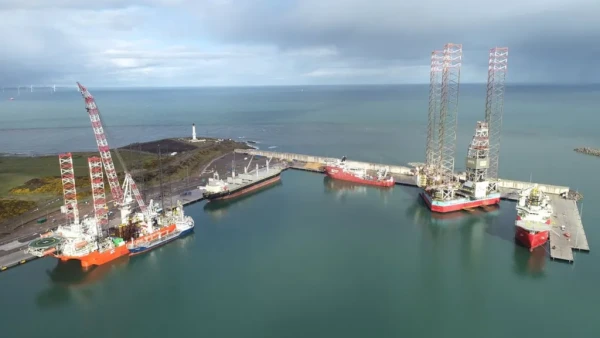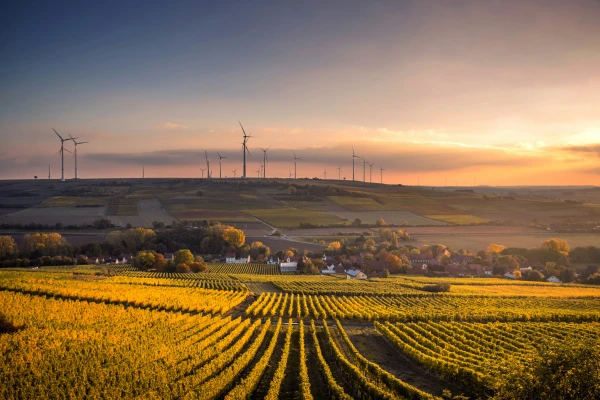Our Views
Data Insight: Top 5 African Countries Leading in Solar Energy Capacity
Africa is witnessing a solar energy boom as it strives to harness abundant sunshine to bridge its energy gap. The continent recently surpassed a symbolic milestone of 20 gigawatts (GW) of installed solar capacity, with another 10 GW under construction. This surge comes at a crucial time – about 600 million Africans (53% of the population) still lack access to electricity, even though most of Africa enjoys over 3,000 hours of sunshine per year. In fact, Africa holds roughly 60% of the world’s best solar resources, yet solar power accounts for only about 3% of its electricity generation. Solar energy is thus not just an environmental imperative but a cornerstone for development, offering a path to electrify communities, drive economic growth, and reduce reliance on fossil fuels. African governments have set ambitious goals, aiming to expand renewable capacity from 56 GW in 2022 to 300 GW by 2030, with solar playing a leading role in this vision.
Amid this momentum, a handful of countries stand out as continental leaders in solar power deployment. Concentrated in the north and south, these nations account for the bulk of Africa’s solar capacity and are spearheading innovative projects and policies. Below, we spotlight five countries at the forefront of Africa’s solar revolution, discussing their progress and the factors driving their success.
South Africa: The Continent’s Solar Powerhouse
South Africa is Africa’s undisputed solar leader, accounting for nearly half of the continent’s installed solar capacity. Thanks to supportive policies like the Renewable Energy Independent Power Producer Programme (REIPPPP) and a strong private sector response, South Africa’s solar capacity has grown to around 8.5 GW as of the end of 2024. This includes utility-scale solar farms and a remarkable boom in small-scale rooftop installations, driven by the need to alleviate chronic power shortages. Flagship projects such as the De Aar and Jasper solar farms (among the largest in the Southern Hemisphere) demonstrate the country’s commitment to renewables. The rapid expansion continues under South Africa’s latest energy plan, which calls for adding another 11 GW of solar by 2030 to diversify the grid away from coal. With its robust policy framework and significant investor interest, South Africa remains the engine of Africa’s solar industry, proving how quickly capacity can scale when government and industry align.
Egypt: North Africa’s Solar Pioneer
Egypt has emerged as a solar powerhouse in North Africa, leveraging its vast deserts for large-scale projects. It is one of only two African countries (along with South Africa) to reach gigawatt-scale solar capacity. A centerpiece of Egypt’s success is the Benban Solar Park in Aswan – a sprawling complex of dozens of plants with a combined capacity of about 1.65 GW. Benban, one of the world’s largest solar parks, exemplifies Egypt’s strategy of mobilizing international investment and independent power producers under a supportive regulatory framework. Beyond Benban, additional projects like the Kom Ombo solar plant and various smaller installations have pushed Egypt’s total solar capacity above the 1.5–2 GW range. The country aims for 42% of its electricity to come from renewables by 2030, up from around 11.5% in 2024, with solar playing a key role alongside wind. Egypt’s government has also encouraged off-grid and distributed solar for remote communities and agriculture, tapping into some of the highest solar irradiation levels in the world in its Western Desert. With strong political will, Egypt is leading in the MENA region’s renewable rollout, demonstrating how large projects and policy targets can catalyze a national solar industry.
Morocco: Harnessing the Desert Sun
Morocco has positioned itself as a renewable energy champion, making bold strides in solar power as part of its clean energy strategy. By 2024 Morocco had about 885 MW of solar capacity installed, placing it among Africa’s top solar countries. While this figure is set to grow, what truly distinguishes Morocco is its visionary projects and integrated planning. The Noor Ouarzazate Solar Complex – a mix of concentrated solar power (CSP) and photovoltaic (PV) plants totaling around 580 MW – showcases cutting-edge solar technology on the edge of the Sahara. This complex not only supplies power to millions of Moroccans but has also put Morocco on the map for hosting one of the largest CSP installations globally. In addition, Morocco is investing in newer PV projects (including recent 400 MW solar PV+battery installations) to reach its goal of over 52% renewable capacity by 2030. The country’s success stems from strong institutions like MASEN (Moroccan Agency for Sustainable Energy) and clear targets, which have attracted international partnerships. Notably, Aninver has contributed to Morocco’s sustainability efforts by supporting climate entrepreneurship – for example, facilitating early-stage funding for green ventures in Morocco to spur clean technology solutions. Such initiatives complement the large infrastructure projects, creating an ecosystem of innovation. Morocco’s experience illustrates how high-level commitment, combined with savvy investments, can turn abundant desert sun into a driver for sustainable development.
Kenya: East Africa’s Solar Upsurge
Kenya leads East Africa in renewable energy and is quickly scaling up its solar capacity to complement its well-established geothermal and wind sectors. While Kenya’s grid-connected solar capacity (several hundred megawatts) is more modest than the giants of North and Southern Africa, the country is a trailblazer in distributed solar solutions. Kenya built the region’s largest solar farm – the 50 MW Garissa Solar Power Plant, which significantly cut power costs and is the biggest solar facility in East and Central Africa. Beyond utility projects, Kenya has embraced off-grid solar at an unprecedented scale: affordable pay-as-you-go solar home systems and mini-grids have proliferated, bringing electricity to rural villages and households far from the national grid. Thanks to these efforts, Kenya is a global leader in the number of solar power systems installed per capita, demonstrating how innovation in financing and distribution can expand energy access. Government support, such as removing import duties on solar equipment and setting ambitious targets under Kenya’s Vision 2030, has further fueled the solar market. Kenyan companies like M-Kopa have gained international recognition for connecting thousands of homes to solar power through micro-payments, underscoring Kenya’s role as an innovator in sustainable energy access. As investments from both public and private sectors grow, Kenya is on track to substantially increase its installed solar capacity and continue leading by example in the region.
Namibia: Tapping into Vast Solar Potential
Namibia’s abundant sunshine and open landscapes make it ideal for solar energy development. The country is investing in large projects like the 100 MW Sores Solar Power Station (groundbreaking ceremony pictured), its biggest solar plant to date, to boost domestic generation. Namibia’s cumulative installed solar capacity reached 163 MW at the end of 2024, and this figure is rising with new installations underway.
Namibia may have a smaller population and power system than others on this list, but it is rapidly emerging as a solar leader in Southern Africa. The nation boasts some of the highest solar irradiance levels globally, giving it immense potential to generate cheap, clean power. In recent years, Namibia has ramped up solar investments to reduce reliance on electricity imports and fossil fuels. By end-2024, it had about 163 MW of solar capacity, and ongoing projects are set to add hundreds of megawatts more. Namibia’s strategy combines utility-scale projects – such as the new 100 MW Sores Gaib plant in the south – with initiatives to promote independent power producers and solar uptake in remote communities. Notably, Namibia is also linking its solar ambitions with the future of green hydrogen: the country has plans for massive solar- and wind-powered hydrogen projects to produce clean fuels for export. Support from international partners (for example, financing from Germany’s KfW for solar farms) has been key to kick-starting these efforts. With renewables already contributing around 70% of its electricity mix (largely from hydropower) and new solar capacity coming online, Namibia aims to achieve energy security and even become a net energy exporter by leveraging its sunshine. Its progress exemplifies how even mid-sized economies can punch above their weight in the renewable arena through vision and smart investment.
Driving Sustainable Energy in Africa
These five countries – South Africa, Egypt, Morocco, Kenya, and Namibia – are at the vanguard of Africa’s solar energy expansion. Their experiences highlight a common theme: strong national commitment and innovative projects can unlock Africa’s vast solar potential for sustainable growth. From massive solar parks to off-grid solutions, these nations are lighting the way forward, proving that clean energy can address both energy poverty and climate change on the continent. They also underscore the importance of partnerships and expertise in achieving these goals. Aninver is proud to contribute to this journey, through initiatives like managing the African Development Bank’s Africa Energy Portal, which provides vital data and insights to support energy transformation across the continent. We have also engaged in projects promoting sustainability and infrastructure development in many of these leading countries, reflecting our commitment to Africa’s green future.
As Africa’s solar story continues to unfold, we invite you to stay informed and get involved. Explore more of Aninver’s articles and insights on sustainable development and energy in Africa, and join the conversation on how to accelerate the transition to a brighter, cleaner energy future. Together, we can support the continent’s drive towards sustainability – one solar project at a time.










